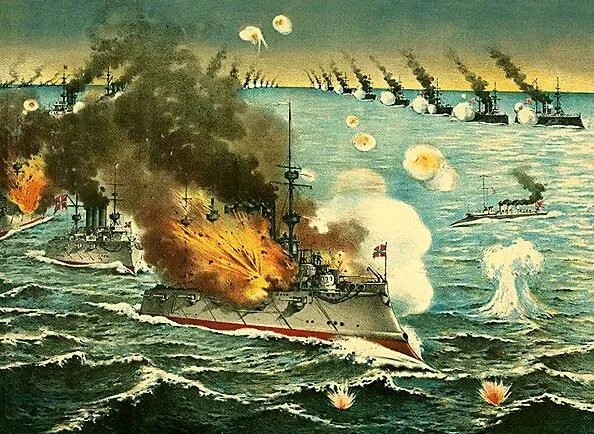After World War II, the Allied powers divided and occupied the territories of the defeated Axis powers, Germany and Japan. Germany was partitioned among the Soviet Union, the United States, the United Kingdom, and France, while Japan was occupied solely by the United States (with a symbolic presence of British troops). This raises an important question: Why was the Soviet Union able to participate in the occupation of Germany but not Japan? The answer lies in the differing military capabilities of the Soviet Union during the war, particularly the strength of its army versus the weakness of its navy.

The Soviet Army: A Land Powerhouse
The Soviet Union’s ability to partition Germany was directly tied to the immense strength of its army. Historically, Russia had always been a land power, with its military focus centered on its army rather than its navy. This tradition continued into the Soviet era, where the Red Army became one of the most formidable land forces in the world.
- Historical Roots of Soviet Military Strength:
- The Russian Army had a long history of success in land warfare, dating back to the Napoleonic Wars, where it played a decisive role in defeating Napoleon’s Grande Armée in 1812.
- During World War I, the Russian Army demonstrated its capabilities in large-scale land battles, such as the Brusilov Offensive in 1916.
- World War II and the Red Army’s Dominance:
- When Nazi Germany launched Operation Barbarossa in 1941, the Soviet Union mobilized its vast resources to build a massive army. By the end of the war, the Red Army had grown to over 6.7 million soldiers, equipped with tens of thousands of tanks, artillery pieces, and aircraft.
- The Red Army’s victories at key battles like Stalingrad (1942–1943) and Kursk (1943) turned the tide of the war on the Eastern Front, allowing the Soviets to push the Germans back across Eastern Europe and into Germany itself.
- In April 1945, the Red Army launched the Berlin Offensive, culminating in the capture of Berlin and the unconditional surrender of Nazi Germany. This military success solidified the Soviet Union’s position as one of the occupying powers in Germany.
The Soviet Navy: A Weakness in Power Projection
While the Soviet Army was a dominant force on land, the Soviet Navy was far less capable, particularly in terms of power projection and amphibious operations. This weakness ultimately prevented the Soviet Union from playing a significant role in the occupation of Japan.
- Historical Neglect of Naval Power:
- Unlike Britain or Japan, which were maritime powers with global empires, Russia and later the Soviet Union were primarily continental powers. Their naval forces were designed for coastal defense rather than overseas expeditions.
- The Soviet Navy inherited much of its fleet from the Russian Empire, which had suffered a humiliating defeat in the Russo-Japanese War (1904–1905), particularly at the Battle of Tsushima.

- World War II and the Soviet Navy’s Limitations:
- At the start of World War II, the Soviet Navy was relatively small and outdated. It consisted of a few old battleships, cruisers, and destroyers, with no aircraft carriers. This made it ill-equipped to compete with the navies of Germany, Britain, or Japan.
- The Soviet Navy’s role during the war was largely confined to supporting land operations in the Black Sea and the Baltic Sea, rather than engaging in large-scale naval battles or amphibious assaults.
- The Challenge of Invading Japan:
- Invading Japan would have required a powerful navy capable of conducting large-scale amphibious operations, something the Soviet Navy lacked. The United States, by contrast, had built a massive fleet of aircraft carriers, battleships, and landing craft during the war, enabling it to launch operations like the invasions of Iwo Jima and Okinawa.
- The Soviet Union’s only significant naval operation in the Pacific during the war was the invasion of the Kuril Islands in August 1945. Even this relatively small operation resulted in heavy Soviet casualties, highlighting the challenges the Soviets would have faced in a larger invasion of Japan.
Geopolitical Factors: The United States’ Dominance in the Pacific
Beyond military capabilities, geopolitical considerations also played a role in the Soviet Union’s exclusion from the occupation of Japan.
- The United States’ Strategic Interests:
- By the end of World War II, the United States had established itself as the dominant power in the Pacific. Its navy and air force controlled the region, and it had no intention of sharing influence over Japan with the Soviet Union.
- The U.S. also possessed atomic bombs, which it used to force Japan’s surrender in August 1945. This gave the U.S. significant leverage in post-war negotiations and allowed it to dictate the terms of Japan’s occupation.
- The Soviet Union’s Limited Role in the Pacific War:
- The Soviet Union’s involvement in the Pacific War was relatively brief. It declared war on Japan on August 8, 1945, just days before Japan’s surrender. While the Red Army quickly overran Japanese forces in Manchuria and Korea, it played no role in the fighting on Japan’s home islands.
- As a result, the Soviet Union had little claim to a share in the occupation of Japan, unlike its significant contribution to the defeat of Nazi Germany.
Conclusion: A Tale of Two Occupations
The Soviet Union’s ability to partition Germany was a direct result of its powerful army, which played a decisive role in defeating Nazi Germany on the Eastern Front. However, its weak navy and limited involvement in the Pacific War meant that it was unable to project power into Japan or challenge the United States’ dominance in the region. As a result, while the Soviet Union became one of the occupying powers in Germany, it was excluded from the occupation of Japan, which remained under sole U.S. control. This division of post-war influence reflected the differing military strengths and strategic priorities of the Allied powers at the end of World War II.

No comments yet.